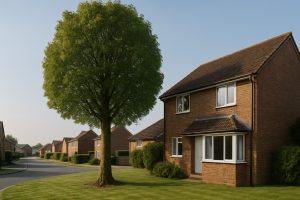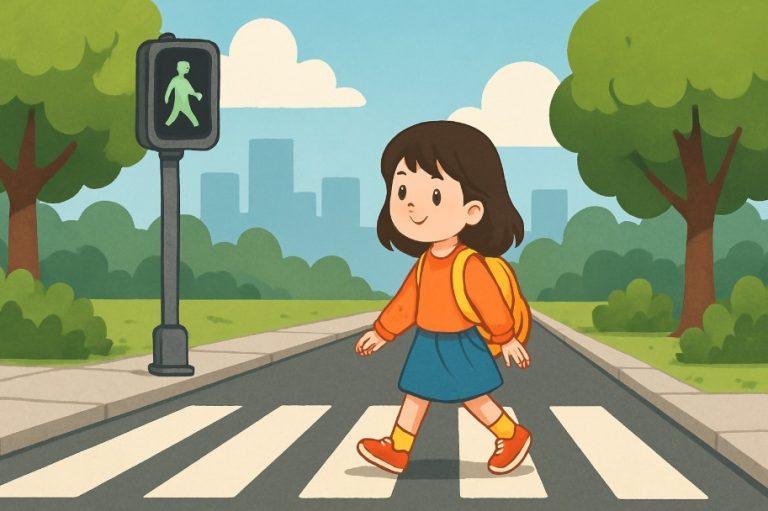In the UK, trees are an admired feature of both rural and urban landscapes. However, when those trees grow close to residential properties, they can lead to legal disputes, safety concerns, and financial complications. Many homeowners wonder whether there’s a law that limits how tall a tree can grow near their house.
The answer is more complex than a simple yes or no. While there’s no specific legal height limit for trees, several laws, rights, and responsibilities come into play when a tree becomes a nuisance or a risk. Understanding these nuances can help avoid conflict and protect your property.
Is There a Legal Maximum Height for Trees Near Residential Homes?

There is currently no law in the UK that restricts the maximum height of trees, even when planted close to a home.
This means a tree can grow to any height unless its presence causes problems such as blocking sunlight, interfering with property use, or posing safety concerns.
This legal stance differs from hedge legislation, where rules do apply. However, even though there’s no height restriction, tree owners can still be held accountable if the tree causes damage or creates a legal nuisance.
When Do High Hedge Laws Apply?
High hedge complaints are handled under the Anti-social Behaviour Act 2003 in England and Wales, and under the High Hedges (Scotland) Act 2013. These laws apply when:
- A line of two or more evergreen or semi-evergreen trees or shrubs stands taller than 2 metres
- The hedge adversely affects the enjoyment of a neighbouring property
In such cases, the affected party can file a formal complaint with their local council, which may result in a legally enforceable order to reduce the hedge’s height. However, the same does not apply to individual trees, even if tall.
What Should You Do if a Tree Is Causing Issues?
If you believe a tree near your property is blocking light, affecting structural safety, or leaning into your land, the best starting point is always to speak directly with the neighbour.
Often, a courteous conversation can resolve the problem without formal complaints.
If dialogue fails or the tree poses a clear hazard, contacting the local council or a qualified arborist is the next appropriate step.
Councils may send inspectors to assess whether the tree poses a risk to safety or public enjoyment and issue a formal notice to remedy the issue.
Can You Make Your Neighbour Cut Down a Tree?

Legally, you cannot demand that a neighbour cuts down a tree simply because of its size.
However, if the tree is causing structural damage, blocking significant light, or is believed to be diseased, you can raise the matter with the local council or seek legal advice.
It is also within your rights to cut back branches or roots that cross into your property, provided the work remains on your side of the boundary.
You must return the cuttings to your neighbour and should never trespass or cut into their property without explicit permission. This kind of action is governed by property boundary law, and legal repercussions can arise if not handled correctly.
What Happens if a Tree Becomes Dangerous?
A tree that leans dangerously, has rotting limbs, or appears likely to fall is considered a safety hazard.
In these cases, the responsibility lies with the owner of the tree. Property owners are expected to maintain their trees to ensure they do not endanger the public or neighbouring land.
If the tree is situated on private land but is considered dangerous to others, the council has the authority to intervene.
This might involve issuing a notice requiring the owner to take necessary action. If the owner does not comply, the council may carry out the work and recover the cost.
Are There Specific Rules for Trees in Conservation Areas?
Yes. Trees located within conservation areas are subject to additional legal protection. If you wish to carry out work on such trees, whether trimming, felling, or pruning you must inform your local council in advance.
The council will typically arrange a site visit to evaluate the tree and the proposed works. If the request is approved, you may proceed under their guidance.
Non-compliance with this process can result in fines and, in some cases, criminal charges.
What Are Your Rights if a Tree Crosses Your Property Boundary?

If a tree’s branches or roots extend into your land, you have the legal right to remove those parts, but only up to the property line.
The law requires that you do not interfere with the tree beyond your boundary without your neighbour’s permission.
It is advisable to document the overgrowth, including photographs, in case disputes arise. It’s also wise to consult your title deeds to confirm exact boundary lines before taking any action.
Who Pays if a Tree Falls and Damages Property?
Responsibility typically lies with the tree owner, especially if the tree was poorly maintained or previously reported as unsafe.
However, if the tree fell due to extreme weather and showed no signs of hazard beforehand, it may be considered an act of nature.
Homeowners should check their building insurance policy, as many policies cover tree-related damage. If the tree’s condition or location was previously known to be a risk, legal liability may also be established.
Do You Need Permission to Cut Down a Tree on Your Own Property?
If the tree is fully within your property and is not subject to a Tree Preservation Order (TPO) or located in a conservation area, you do not need permission to cut it down.
However, trees can be legally protected, especially if they are of significant age, species, or historical value. You can check with your local council to find out whether a TPO is in place.
Can Trees Affect Property Value?

Trees can either enhance or reduce the value of a property. A well-maintained, mature tree may add to the aesthetic appeal of a home and provide desirable features such as privacy or shade.
On the other hand, trees that are too close to structures, require regular expensive maintenance, or create legal liabilities may deter buyers.
Buyers may also be wary if a tree poses risks like subsidence, root damage, or reduced natural light. A pre-purchase property inspection should include an assessment of any trees on or near the property.
What Can You Do If You Discover a Tree Problem After Buying a Property?
If you move into a new property and later discover that a tree is diseased, dangerous, or causing structural issues, your first step should be to contact your local council for an inspection.
If the issue was known but undisclosed during the sale, you may have grounds to claim against:
- The previous owner, for misrepresentation
- The surveyor, for professional negligence
Legal advice is essential in such cases, particularly if the tree was contributing to damage that should have been disclosed or identified.
How Far Should Trees Be from a House?
Although there’s no legally required distance, arborists and structural engineers recommend maintaining suitable spacing between trees and buildings to prevent root damage and subsidence.
The appropriate distance depends on the species and its expected mature height.
| Tree Type | Mature Height | Recommended Distance from House |
| Oak | 20–40 m | 20+ m |
| Birch | 12–20 m | 10–15 m |
| Cherry (Ornamental) | 6–10 m | 7–10 m |
| Leylandii | Up to 30 m | 15–20 m |
| Maple (Acer) | 4–8 m | 5–7 m |
| Apple Tree | 4–7 m | 5–7 m |
These guidelines help prevent future issues with subsidence, overgrowth, and property damage.
Frequently Asked Questions
What is the legal height limit for trees near houses in the UK?
There’s no set legal height limit, but problems can arise if the tree causes a nuisance or safety issue.
Can I legally cut branches from a neighbour’s tree?
Yes, if they extend into your property. However, you must stay within your boundary and return any cuttings.
Is my neighbour responsible if their tree damages my home?
In most cases, yes. Especially if the tree was neglected. Insurance may also cover such damage.
Do high hedge rules apply to single trees?
No. High hedge legislation only applies to rows of evergreen or semi-evergreen plants over 2 metres high.
Can I be fined for cutting a protected tree?
Yes. If a tree is protected by a TPO or in a conservation area, unauthorised work can result in legal action.
Should I check tree conditions before buying a property?
Absolutely. Tree health and proximity should be evaluated during a pre-purchase inspection.
What’s the best way to resolve a tree dispute?
Start by talking to your neighbour. If that fails, consult your local council or a mediator.
READ NEXT:






